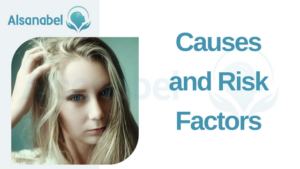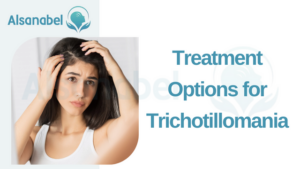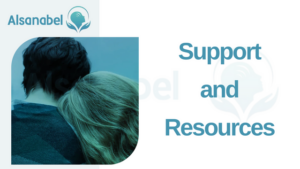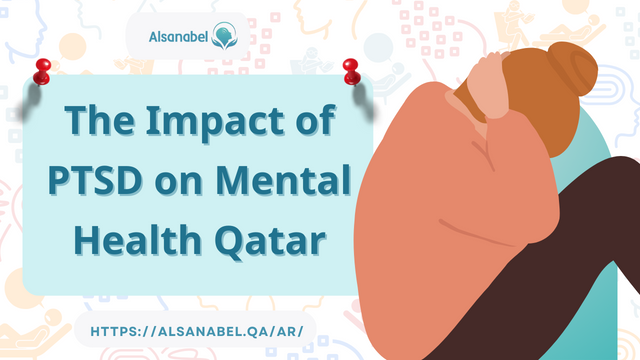Understanding Trichotillomania And Treatment Options 2023
- Category ADHD
Table of Contents
ToggleIntroduction to Trichotillomania
Trichotillomania is a psychological disorder characterized by the compulsive urge to pull out one’s own hair, resulting in noticeable hair loss. This condition is classified as an impulse control disorder and can have a significant impact on an individual’s well-being and quality of life.
Signs and symptoms
Signs and symptoms trichotillomania may vary from person to person, but commonly include:
- Repetitive hair pulling: Individuals with trichotillomania experience an irresistible urge to pull out their hair, often resulting in hair loss and bald patches.
- Feelings of tension before pulling: Many individuals with trichotillomania report feeling a growing tension or anxiety leading up to the hair-pulling behavior.
- Sense of pleasure or relief after pulling: After hair pulling, individuals may experience a sense of satisfaction, pleasure, or relief.
- Emotional distress and shame: Trichotillomania can lead to emotional distress, embarrassment, and feelings of shame due to the noticeable hair loss.
- Attempts to hide the behavior: Individuals with trichotillomania often go to great lengths to hide their hair-pulling behavior, such as wearing hats or wigs.
It is important to note that trichotillomania is a complex disorder that can have physical, emotional, and social consequences. Seeking professional help from a mental health provider is recommended for accurate diagnosis and appropriate treatment options.
Causes and Risk Factors
Trichotillomania is a complex psychological disorder that can be influenced by a combination of genetic and environmental factors. Understanding the underlying causes and risk factors can help individuals better comprehend the condition and seek appropriate treatment options.

Genetic and environmental factors
Research suggests that there may be a genetic component to it, as it can sometimes run in families. Certain variations in genes that are involved in regulating brain chemicals, such as serotonin, dopamine, and glutamate, have been found to be associated with the development of impulse control disorders.
Additionally, environmental factors also play a role. Traumatic life events, chronic stress, and exposure to certain environmental triggers can contribute to the onset or exacerbation of trichotillomania symptoms. Such triggers may include personal loss, a history of abuse, or significant life changes.
Emotional and psychological triggers
Emotional and psychological factors can also influence trichotillomania. People with trichotillomania often experience a sense of tension or anxiety before engaging in hair-pulling behaviors. The act of pulling out hair provides a momentary sense of relief or pleasure, which can reinforce the behavior. Emotional distress, such as depression, anxiety, or low self-esteem, can also contribute to the development and persistence of the symptoms.
Understanding the various causes and risk factors of trichotillomania is crucial for effective treatment. Seeking professional help from a mental health provider is recommended for accurate diagnosis and the development of a tailored treatment plan. Treatment options may include cognitive-behavioral therapy, medication, and support groups, all aimed at helping individuals manage the urges and symptoms associated with it.
Understanding Borderline Personality Disorder 2023
Types and Subtypes
Trichotillomania is a complex psychological disorder characterized by the repetitive pulling out of one’s own hair, resulting in noticeable hair loss. It is important to understand the different types and subtypes of it to effectively diagnose and treat the condition.
Focused Trichotillomania
One type of it is focused trichotillomania. In this subtype, individuals are consciously aware of their hair-pulling behavior and actively engage in it. They may experience a sense of tension or anxiety before pulling their hair, which is relieved briefly during the act itself. It often occurs in response to emotional distress or as a way to cope with negative thoughts or feelings.
Automatic Trichotillomania
Another type of trichotillomania is automatic trichotillomania. In this subtype, individuals pull their hair without conscious awareness or intention. They may absent-mindedly engage in hair-pulling while engaged in other activities, such as reading, watching TV, or using electronics. It tends to be more compulsive in nature and may occur as a result of boredom, stress, or even as a habit.
Understanding the types and subtypes of trichotillomania is crucial in developing an individualized treatment plan. Treatment options may include cognitive-behavioral therapy (CBT), medication, and support groups. CBT can help individuals identify and modify the thoughts and behaviors that contribute to hair-pulling, while medication can help manage any underlying anxiety or depression. Support groups provide a sense of community and understanding, allowing individuals to share experiences and learn from others who are going through similar challenges.
In conclusion, trichotillomania is a complex disorder that manifests in different ways. By understanding the types and subtypes of trichotillomania, individuals can seek appropriate treatment options that address their specific needs. Seeking professional help from a mental health provider is essential for an accurate diagnosis and the development of a tailored treatment plan.
Treatment Options for Trichotillomania
Trichotillomania is a complex psychological disorder that requires a tailored treatment plan to effectively manage the condition. Understanding the available treatment options is crucial in helping individuals overcome this challenging disorder. Here, we will explore two primary treatment options for it: cognitive-behavioral therapy (CBT) and medication.

Cognitive-behavioral therapy (CBT)
CBT is a widely recognized and effective form of therapy for trichotillomania. This therapy focuses on identifying and modifying the thoughts and behaviors that contribute to hair-pulling. Through CBT, individuals learn to recognize triggers, develop coping mechanisms, and replace hair-pulling with healthier behaviors. CBT can help individuals gain a better understanding of their emotions, reduce anxiety levels, and improve their overall quality of life.
Medication Options
In some cases, medication may be prescribed to help manage the symptoms of it. Selective serotonin reuptake inhibitors (SSRIs) are commonly used medications for this purpose. SSRIs help regulate serotonin levels and may reduce the urge to pull hair. Additionally, antipsychotic medications such as haloperidol or pimozide may be prescribed for severe cases of trichotillomania.
It is important to note that medication should always be prescribed and monitored by a qualified healthcare professional. They will consider individual circumstances, symptoms, and potential side effects before recommending a specific medication.
Overall, a combination of cognitive-behavioral therapy and medication can be highly effective in treating trichotillomania. However, treatment options may vary depending on the severity of the condition and the individual’s specific needs. Seeking professional help from a mental health provider is crucial for an accurate diagnosis and the development of a tailored treatment plan.
Self-help Strategies
In addition to professional treatment, there are self-help strategies that individuals with it can implement to manage their condition.
Identifying triggers and developing coping mechanisms
One important step in managing trichotillomania is identifying triggers that lead to hair-pulling episodes. These triggers can vary from person to person and may include emotions such as stress, anxiety, or boredom. By becoming aware of these triggers, individuals can develop coping mechanisms to redirect their behavior. Techniques such as deep breathing, journaling, or engaging in other activities that provide sensory stimulation can be helpful in managing the urge to pull hair.
Creating a supportive environment
Creating a supportive and understanding environment is crucial in managing trichotillomania. It is important for family, friends, and loved ones to be educated about the condition and offer emotional support. Seeking a support group or connecting with others who have it can also provide a sense of community and understanding. Additionally, removing or limiting access to tools used for hair-pulling, such as tweezers or scissors, can help reduce opportunities for pulling hair.
By implementing these self-help strategies and seeking professional treatment, individuals with it can effectively manage their condition and improve their quality of
Support and Resources
Trichotillomania is a complex psychological disorder that requires comprehensive treatment and support. In addition to professional treatment options like cognitive-behavioral therapy (CBT) and medication, there are various support and resources available for individuals with it. These resources can provide valuable information, guidance, and a sense of community for those dealing with this challenging condition.

Support groups and online communities
Support groups and online communities can be incredibly beneficial for individuals with it. These platforms provide a safe space for individuals to share their experiences, seek advice, and connect with others who understand their struggles. Hearing personal stories and receiving support from others who are going through similar challenges can provide comfort and validation. Online communities also offer the convenience of anytime access, making them particularly helpful for those who may not have access to in-person support groups in their area.
Professional organizations and websites
There are several professional organizations and websites dedicated to raising awareness and providing resources for trichotillomania. These organizations offer information about the disorder, treatment options, and support services. They may also have online forums, educational materials, and recommendations for finding specialized healthcare professionals. Some organizations even organize events and conferences focused on it, allowing individuals and professionals to come together, share knowledge, and foster a sense of community.
Finding support and resources for trichotillomania is crucial in effectively managing the condition and improving overall well-being. Whether through support groups, online communities, or professional organizations, individuals with it can access valuable information, guidance, and a sense of community that can make a significant difference in their journey towards recovery. It is important to explore these resources and seek out the support needed to navigate the challenges of it successfully.
Frequently Asked Questions
- Can trichotillomania be cured? While there is no cure for trichotillomania, it can be effectively managed with the right treatment and support.
- How long does treatment for trichotillomania take? The duration of treatment varies depending on individual circumstances. It may take several months or longer to achieve significant progress.
- Can children and teenagers develop trichotillomania? Yes, trichotillomania can develop in children and teenagers. Early intervention and appropriate treatment are crucial in these cases.
- What should I do if I think I have trichotillomania? If you suspect you have trichotillomania, it is important to consult with a healthcare professional, such as a psychologist or psychiatrist, who can provide an accurate diagnosis and guide you towards appropriate treatment options.
Overall, with proper treatment, support, and understanding, individuals with trichotillomania can find hope and effectively manage their condition, improving their quality of life. Education, awareness, and seeking professional help are key in navigating the challenges associated.









